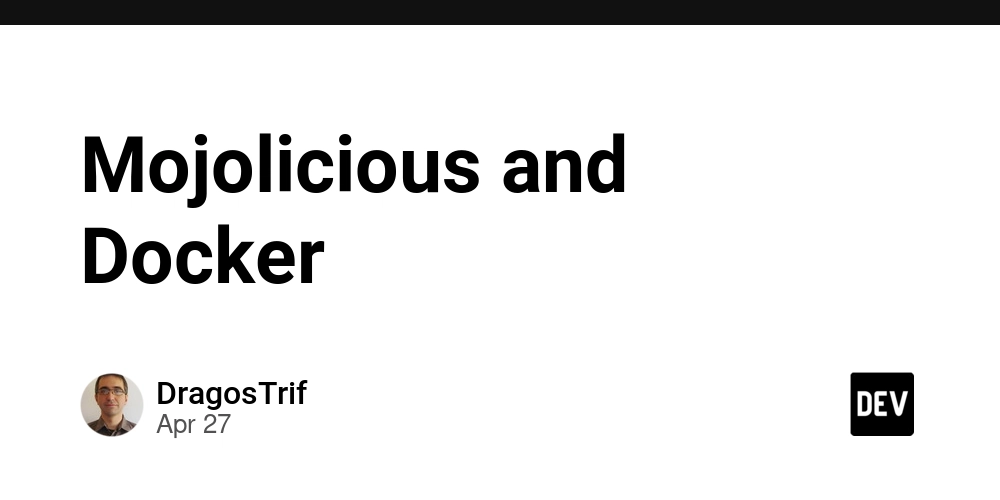Embracing Rich Domain Objects: A Practical Guide
In the domain of software design, the way data is modeled significantly impacts the clarity, robustness, and scalability of an application. As systems evolve and become increasingly complex, the need for clear domain boundaries and well-encapsulated behavior becomes essential. This is where Rich Domain Objects (RDO) offer a compelling solution. RDOs advocate for encapsulating both state and behavior within domain entities, thereby promoting a more cohesive and maintainable architecture. In this article, we will explore the concept of Rich Domain Objects, their benefits, and how they can be effectively implemented in Java using a practical, real-world example. By the end, you will gain a deeper understanding of this approach and walk away with testable, production-ready code. Understanding Rich Domain Objects Rich Domain Objects are rooted in the principles of Domain-Driven Design (DDD). They encourage developers to model software entities based not solely on data structure, but also on domain specific responsibilities and behavior. Unlike anemic domain models, which serve merely as data containers, Rich Domain Objects (RDOs) encapsulate: State (data) Business logic (behavior) Validation rules (ensure data integrity and enforce domain constraints) This encapsulation ensures that domain rules are enforced consistently and that object behavior remains predictable and coherent. Advantages of Rich Domain Objects Adopting Rich Domain Objects offers several architectural and development benefits. Encapsulation of Business Logic: By keeping business rules within the domain model, logic stays close to the data it governs, reducing scattering across services or controllers. Improved Domain Consistency: Validation and rule enforcement are centralized, preventing invalid states from emerging during runtime. Self-Validation: Objects verify their own validity upon state changes, resulting in more reliable systems. Expressive APIs: Methods such as changeCategory() communicate domain intent more clearly than traditional setters like setCategory() and setAge(). Business-Aligned Code: The object model naturally mirrors domain language, improving communication between technical and non-technical stakeholders. Practical Example: Modeling an Athlete Domain To demonstrate the utility of RDOs, let us consider an Athlete class responsible for managing personal data and categorizing athletes based on their age. public class Athlete { private final String name; private int age; private Category category; private Athlete(String name, int age) { this.name = name; setAge(age); setCategory(age); } public static Athlete create(String name, int age) { return new Athlete(name, age); } public String name() { return name; } public int age() { return age; } public Category category() { return category; } public void changeCategory(int age) { setAge(age); setCategory(age); } private void setAge(int age) { if (age age >= c.minAge() && age new IllegalArgumentException("Category not found for the age: " + age)); } } This implementation ensures that age and category are always valid and correctly synchronized, reducing the likelihood of inconsistent object states. The following Category enum provides a clear and self-contained definition of age-based classifications: public enum Category { JUNIOR(10, 17), ELITE(18, 35), MASTER(36, 99); private final int minAge; private final int maxAge; Category(int minAge, int maxAge) { this.minAge = minAge; this.maxAge = maxAge; } public int minAge() { return minAge; } public int maxAge() { return maxAge; } } Whenever an athlete’s age is set or updated, the appropriate category is automatically applied in accordance with the business rules. Testing the Reliability of Rich Domain Objects One of the key benefits of Rich Domain Objects is that they are inherently easier to test. Because the business logic is embedded within the domain itself, unit tests become more focused and reliable. Below is a JUnit test suite that verifies the expected behavior of the Athlete class: @Test void givenValidInputs_whenCreateAthleteIsCalled_thenAthleteIsReturned() { Athlete athlete = Athlete.create("Horse Power", 37); Assertions.assertEquals(Category.MASTER, athlete.category()); } @Test void givenInvalidAge_whenCreateAthleteIsCalled_thenIllegalArgumentExceptionThrown() { String msg = assertThrows(IllegalArgumentException.class, () -> Athlete.create("Horse", 5)).getMessage(); Assertions.assertEquals("Category not found for the age: 5", msg); } @Test void givenNegativeAge_whenCreateAthleteIsCalled_thenExceptionThrown() { String msg = assertThrows(IllegalArgumentException.class, () -> Athlete.create("Horse", -5)).getMessage();

In the domain of software design, the way data is modeled significantly impacts the clarity, robustness, and scalability of an application. As systems evolve and become increasingly complex, the need for clear domain boundaries and well-encapsulated behavior becomes essential.
This is where Rich Domain Objects (RDO) offer a compelling solution. RDOs advocate for encapsulating both state and behavior within domain entities, thereby promoting a more cohesive and maintainable architecture.
In this article, we will explore the concept of Rich Domain Objects, their benefits, and how they can be effectively implemented in Java using a practical, real-world example. By the end, you will gain a deeper understanding of this approach and walk away with testable, production-ready code.
Understanding Rich Domain Objects
Rich Domain Objects are rooted in the principles of Domain-Driven Design (DDD). They encourage developers to model software entities based not solely on data structure, but also on domain specific responsibilities and behavior.
Unlike anemic domain models, which serve merely as data containers, Rich Domain Objects (RDOs) encapsulate:
- State (data)
- Business logic (behavior)
- Validation rules (ensure data integrity and enforce domain constraints)
This encapsulation ensures that domain rules are enforced consistently and that object behavior remains predictable and coherent.
Advantages of Rich Domain Objects
Adopting Rich Domain Objects offers several architectural and development benefits.
Encapsulation of Business Logic: By keeping business rules within the domain model, logic stays close to the data it governs, reducing scattering across services or controllers.
Improved Domain Consistency: Validation and rule enforcement are centralized, preventing invalid states from emerging during runtime.
Self-Validation: Objects verify their own validity upon state changes, resulting in more reliable systems.
Expressive APIs: Methods such as changeCategory() communicate domain intent more clearly than traditional setters like setCategory() and setAge().
Business-Aligned Code: The object model naturally mirrors domain language, improving communication between technical and non-technical stakeholders.
Practical Example: Modeling an Athlete Domain
To demonstrate the utility of RDOs, let us consider an Athlete class responsible for managing personal data and categorizing athletes based on their age.
public class Athlete {
private final String name;
private int age;
private Category category;
private Athlete(String name, int age) {
this.name = name;
setAge(age);
setCategory(age);
}
public static Athlete create(String name, int age) {
return new Athlete(name, age);
}
public String name() { return name; }
public int age() { return age; }
public Category category() { return category; }
public void changeCategory(int age) {
setAge(age);
setCategory(age);
}
private void setAge(int age) {
if (age <= 0) {
throw new IllegalArgumentException("Age must be a positive number.");
}
this.age = age;
}
private void setCategory(int age) {
this.category = Arrays.stream(Category.values())
.filter(c -> age >= c.minAge() && age <= c.maxAge())
.findFirst()
.orElseThrow(() -> new IllegalArgumentException("Category not found for the age: " + age));
}
}
This implementation ensures that age and category are always valid and correctly synchronized, reducing the likelihood of inconsistent object states.
The following Category enum provides a clear and self-contained definition of age-based classifications:
public enum Category {
JUNIOR(10, 17),
ELITE(18, 35),
MASTER(36, 99);
private final int minAge;
private final int maxAge;
Category(int minAge, int maxAge) {
this.minAge = minAge;
this.maxAge = maxAge;
}
public int minAge() {
return minAge;
}
public int maxAge() {
return maxAge;
}
}
Whenever an athlete’s age is set or updated, the appropriate category is automatically applied in accordance with the business rules.
Testing the Reliability of Rich Domain Objects
One of the key benefits of Rich Domain Objects is that they are inherently easier to test. Because the business logic is embedded within the domain itself, unit tests become more focused and reliable.
Below is a JUnit test suite that verifies the expected behavior of the Athlete class:
@Test
void givenValidInputs_whenCreateAthleteIsCalled_thenAthleteIsReturned() {
Athlete athlete = Athlete.create("Horse Power", 37);
Assertions.assertEquals(Category.MASTER, athlete.category());
}
@Test
void givenInvalidAge_whenCreateAthleteIsCalled_thenIllegalArgumentExceptionThrown() {
String msg = assertThrows(IllegalArgumentException.class,
() -> Athlete.create("Horse", 5)).getMessage();
Assertions.assertEquals("Category not found for the age: 5", msg);
}
@Test
void givenNegativeAge_whenCreateAthleteIsCalled_thenExceptionThrown() {
String msg = assertThrows(IllegalArgumentException.class,
() -> Athlete.create("Horse", -5)).getMessage();
Assertions.assertEquals("Age must be a positive number.", msg);
These tests demonstrate how domain rules are strictly enforced, ensuring the creation of only valid, well-formed objects.
Conclusion
Rich Domain Objects represent a fundamental shift toward more robust, behavior-oriented domain modeling. They enable developers to create systems that are not only easier to maintain but also more aligned with real-world business processes.
By embedding business logic within domain entities, developers can build applications that are resilient, expressive, and aligned with stakeholder language. This approach also facilitates better testing, clearer APIs, and a reduction in bugs related to invalid object states.
Before creating your next domain model, consider the following question:
Should this object merely store data, or should it also know how to manage and validate that data?
In many cases, the latter leads to a more accurate and effective design.
Additional Resources
For a step-by-step video walkthrough of this example and further explanation of the pattern in action, watch the full tutorial:





































































































































































![[The AI Show Episode 145]: OpenAI Releases o3 and o4-mini, AI Is Causing “Quiet Layoffs,” Executive Order on Youth AI Education & GPT-4o’s Controversial Update](https://www.marketingaiinstitute.com/hubfs/ep%20145%20cover.png)




























































































































![[FREE EBOOKS] Learn Computer Forensics — 2nd edition, AI and Business Rule Engines for Excel Power Users & Four More Best Selling Titles](https://www.javacodegeeks.com/wp-content/uploads/2012/12/jcg-logo.jpg)





![From Art School Drop-out to Microsoft Engineer with Shashi Lo [Podcast #170]](https://cdn.hashnode.com/res/hashnode/image/upload/v1746203291209/439bf16b-c820-4fe8-b69e-94d80533b2df.png?#)






































































































(1).jpg?#)
































_Inge_Johnsson-Alamy.jpg?width=1280&auto=webp&quality=80&disable=upscale#)











































































































![Apple to Split iPhone Launches Across Fall and Spring in Major Shakeup [Report]](https://www.iclarified.com/images/news/97211/97211/97211-640.jpg)
![Apple to Move Camera to Top Left, Hide Face ID Under Display in iPhone 18 Pro Redesign [Report]](https://www.iclarified.com/images/news/97212/97212/97212-640.jpg)
![Apple Developing Battery Case for iPhone 17 Air Amid Battery Life Concerns [Report]](https://www.iclarified.com/images/news/97208/97208/97208-640.jpg)
![AirPods 4 On Sale for $99 [Lowest Price Ever]](https://www.iclarified.com/images/news/97206/97206/97206-640.jpg)
































![[Updated] Samsung’s 65-inch 4K Smart TV Just Crashed to $299 — That’s Cheaper Than an iPad](https://www.androidheadlines.com/wp-content/uploads/2025/05/samsung-du7200.jpg)



































































